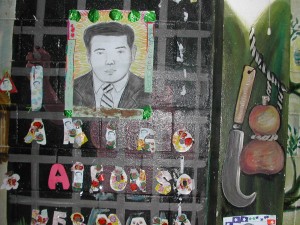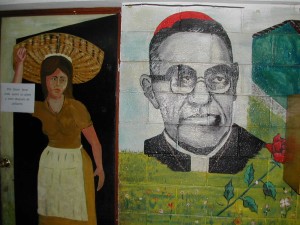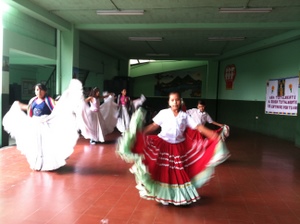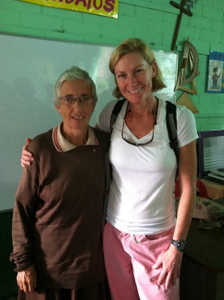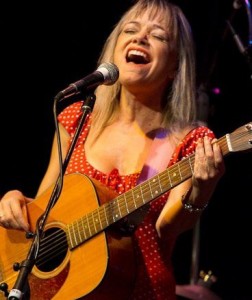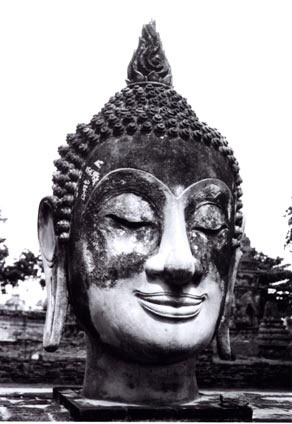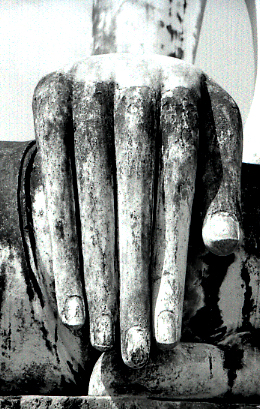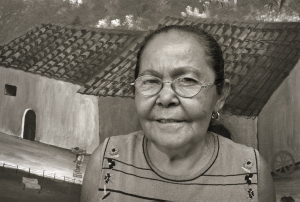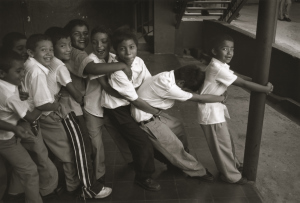I came to San Salvador a few weeks ago exhausted, in the middle of the rain, arriving, very appropriately, at the house I would be sharing with my Salvadorians housemates, Julio and Neto. I say “very appropriately” because the house is called Casa de la Paz, the House of Peace. Within a few days, I started teaching my class, “Writing from Life” to my students from Casa de la Solidaridad.
From the very beginning, our writing exercises were focused on mindfulness and awareness. I gave my students different questions to investigate. Questions such as, “What is this moment?” or “What am I?” help us to be present, but we were also trying to capture, through our senses, the intimate knowing that comes through the realization of this new world—the subtle differences of culture, sound, taste and sight. With these questions, I want them to “notice” that we are in a different country, the different use of color, the smell of wetness in the afternoon (we are in the winter now and it is the rainy season), the taste of pupusas, the bites of mosquitos and the background “sound” of Spanish in the many conversations that surround us.

Sonia's Champa
But being present is hard work. Other realities came to us as well, as we were sinking into the reality of El Salvador. I’m thinking of a conversation I had with Sonia, a twenty-one year old single mom we are trying to help through Programa Velasco. Sonia lives in the San Ramon district, where I go every week. It is beautiful to be there with the different communities and learning about their experiences, but things are pretty difficult there. It is one of the poorest areas in the capital and even though working with the families of San Ramon is a joy, it is also an experience that never leaves us untouched. As David White says, “revelation must be terrible.”
A few days ago, I went to visit Sonia. A single mother with three children, she lives in a terrible place half the size of my office. The champa, the shack, is dark and when it rains at night, water easily gets in. Her youngest child, Noel, is three months old. Her two daughters are sick all the time and they don’t look healthy even when they are lucky enough to go to school. A few days ago, Sonia sold her cell phone so she could buy food for her children. She lost her job when she got pregnant with Noel and now her situation is desperate. Sonia told me that she suffers from chronic headaches. This young woman is very loving and she mentions her faith in God constantly, but her husband is in prison, her brothers are involved with drugs, and when I talked to her she seemed to be facing the world completely alone.

Sonia's Family
The evening after our conversation, I arrived at the house shaken by her story. I have seen stories like these before, I tried to tell myself that night before going to bed. But when I woke up that night, at 3:00 am, I was really angry. What is this? Why this suffering? Where are you? I asked. It was one of the moments when you really need to have a serious conversation with God. The questions kept me awake for a long time.
In my Casa de la Solidaridad students and the Salvadorian families we accompany, I see a sincere thirst for answers to the terrible suffering we confront on a daily basis. Within the first three weeks of classes my students are moving through different and difficult questions: Why is this happening? What is solidarity? How can we love others in our busy world?

San Ramon
I’m thinking about my arrival at the House of Peace and why we are here. Part of the reason is to accompany the Salvadoran communities in their difficult journey. The other part is to try to teach the students, within an academic context, about the difficulties the poor are facing around the world, and help them write about it in a way that clarifies the unfolding of their most authentic self in the midst of challenges.
But while being present to life is a difficult challenge, I am also aware of the power of questions. These days I am working with the question, What is this? It appears every time I ask about Sonia’s situation in San Ramon. In Programa Velasco we are actively helping the world, but I also see “the question” as the space we hold, the space we create to allow the answers to grow. Through the combination of contemplative practice and creative writing, we can hold a space, an energizing question, where the nurturing interaction between the spiritual and the creative can grow into new possibilities.
A question can give direction and meaning to your life. How do you connect with suffering in others and in yourself? How do you connect with your authentic self in your life? Is your writing energized and driven by an important question? Allow yourself a few minutes of awareness and reflection. Write a list of questions that trigger the most authentic energy for your writing and your life.
Juan
 But these conclusions are based on the status quo, on what we know now, not what may be. My garden reminds me that we live in a world of dynamic growth, a world of possibilities. The bright red clusters of tomatoes in my garden, “Sweet 100’s,” offer silent testimony to the seeds of possibilities within and around us. During a single growing season, each Sweet 100 plant can bear over one hundred tomatoes. That’s a sign of abundance right there. But depending on the variety, a single tomato can contain from 16 to over 300 seeds, each of which could become a tomato plant. At this point we’re in the realm of higher mathematics. How many potential tomatoes exist within one tomato plant?
But these conclusions are based on the status quo, on what we know now, not what may be. My garden reminds me that we live in a world of dynamic growth, a world of possibilities. The bright red clusters of tomatoes in my garden, “Sweet 100’s,” offer silent testimony to the seeds of possibilities within and around us. During a single growing season, each Sweet 100 plant can bear over one hundred tomatoes. That’s a sign of abundance right there. But depending on the variety, a single tomato can contain from 16 to over 300 seeds, each of which could become a tomato plant. At this point we’re in the realm of higher mathematics. How many potential tomatoes exist within one tomato plant? soul?
soul? A tree that reaches past your embrace
A tree that reaches past your embrace
